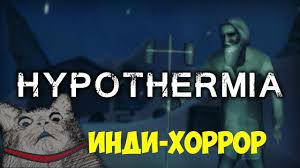Hypothermia is an abnormally low body temperature resulting from a negative balance between body heat productivity and heat loss. When the body temperature falls below 35r C. Physiologic changes can be expected.
Diminished production of body heat rarely reduces body temperature to seriously low levels. In some debilitating states, narcosis, prolonged unconsciousness, fatigue, and metabolic disorders, the body temperature may fall to 25° to 30° C.
However, the hypothermia resulting from accelerated loss of body heat to the environment is considerably more serious, especially when man is immersed in a medium of high heat capacity such as cold water. The inadequately protected man exposed to water at about 0° C. will lose consciousness in about 5 to 15 minutes and will die in 30 to 60 minutes. Most cases of accidental hypothermia result from long exposure to cold air or snow of people who have become unconscious from inebriation, diabetes, epilepsy, or other illness.
The most valuable clinical.and research data have been obtained from studies of patients in whom hypothermia was induced as a special technique in cardiovascular surgery and neurosurgery. In such cases, medical support and control are critical.
What Causes Hypothermia Being A Doctor You Must Know
In hypothermia below 35° C., there is gradual diminution in all physiologic activities. The pulse rate, blood pressure, and metabolic rate fall, and uncontrollable shivering begins. As the body temperature approaches 30° C., disorders of consciousness, such as hallucinations or narcosis, appear. This is the zone of maximal benefit in the surgical patient since the oxygen requirement is reduced to about 40 per cent of normal, allowing safer ‘ occlusion of the circulation. The systolic blood pressure is usually lowered to about 90 mm. of mercury. Moderate acidosis appears, owing probably to C02 retention.
The most dangerous consequence of hypothermia is ventricular fibrillation. This arrhythmia has commanded most attention and has set the lower limits for the hypothermia used in surgery. It is generally agreed that 28° C. permits occlusion of the circulation for about eight minutes. However, some groups achieve as much as 15 minutes’ occlusion with body temperatures of 25° C.
Treatment
The treatment of hypothermia requires that the negative heat balance of the body be corrected. Rapid rewarming in a water bath of 40° to 45° C. is most desirable. Artificial respiration with oxygen is necessary for the unconscious, apneic patient. The use of 5 per cent C02 and 95 per cent oxygen is valuable in stimulating respiration and correcting the metabolic acidosis. Anti Fibrillating drugs such as quinidine or procaine amide are of doubtful use, whereas electrical defibrillation or cardiac massage is most consistently effective. Ventricular fibrillation must be guarded against fcr several hours after the body temperature returns to normal.
Clinical reports of accidental hypothermia demonstrate high mortality rates, 80 per cent or more. An important contributory cause is persistent neurologic damage. Brain damage is characterized by disturbances in consciousness or memory, hypotonia of large postural muscles, and brain stem dysfunction. Little or no residual brain damage is reported at temperatures above 24° to 30° C.
ACCIDENTAL (SPONTANEOUS) HYPOTHERMIA IN THE AGED
In the last decade, British clinicians have drawn attention to the spontaneous development of hypothermia among elderly patients. Usually the subjects have been living alone in underheated homes during the cold weather, unable to obtain assistance. There is evidence that those affected have defective mechanisms for conserving body heat, and the suggestion has also been made that therapy with chlorpromazine accentuates the defect.
Patients with body temperatures ranging down to 32° O. usually regain normal temperature within a day or two after being removed to a comfortable environment. However, when body temperature falls to 25° to 32° C., a serious medical problem is presented. Consciousness is impaired, and shivering has ceased. Pulse, respiration, and blood pressure are depressed, and subcutaneous edema may be present. Neurologic signs are sluggish. Commonly, this clinical picture is at first misdiagnosed as cerebrovascular accident. It has been estimated that as many as 2000 deaths may occur annually in Great Britain among elderly patients with accidental hypothermia.
Treatment by rapid rewarming may lead to sudden loss of peripheral vasoconstriction and circulatory failure. It is though: best to reduce body heat loss by the use of thermal insulation and to allow gradual and spontaneous accumulation of metabolic heat. Parenteral fluids in the form of 5 per cent glucose or plasma may be required, but must be administered with caution because of the tendency to pulmonary edema. These patients are liable tG respiratory infection and may need antimicrobial therapy.

